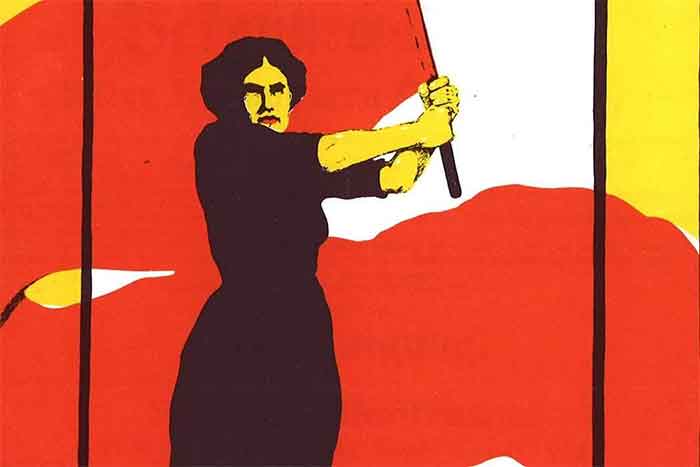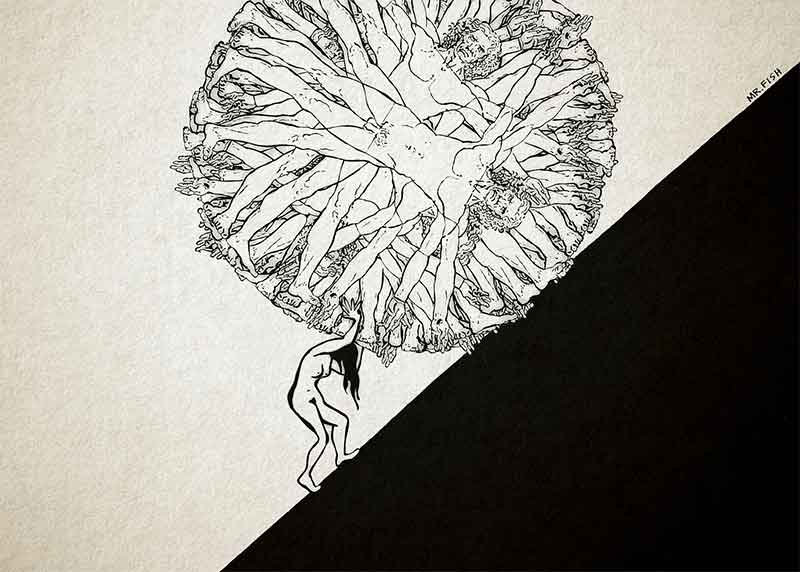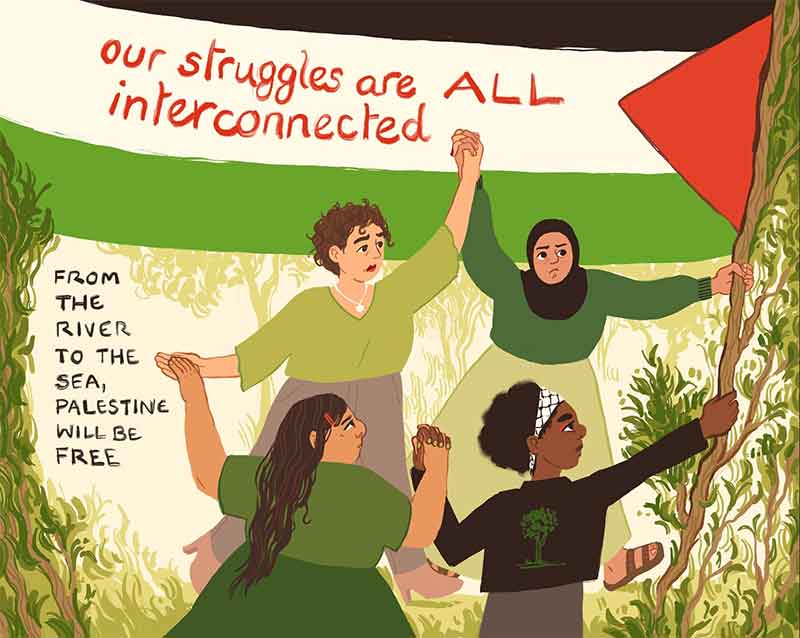
During the first few decades of the feminist movement, it was assumed that women as a social group, as a political constituency could organise themselves as a unified entity in order for them to give voice to their demands. Underlying this assumption was the belief that women’s oppression was a more or less universal fact and so there was a measure of solidarity in the hurt claims that women were voicing. In some societies like India which was under the yoke of colonialism, the reform movements of the 19th century brought the miserable condition of Indian women to the attention of the colonial government and to the public at large, leading to a series of legislations which ostensibly helped improve the condition of Indian women. However mindsets took longer to change and despite some changes in the public domain and ameliorative measures, the material condition of women within the family continued to be unequal and oppressed.
The first wave of feminism or liberal feminism was visible in the west, specifically US and England and had its roots in both Enlightenment rationality as well as in 19th century liberal thinking represented by Mary Wollstonecraft, John Stuart Mill and Harriet Taylor Mill, who stressed on the importance of liberty or freedom for the individual (whether to pursue his/her profession/religion), on individual rights and justice and also on political equality. However the operative assumption was that the subject of this feminism was a homogeneous and undifferentiated subject. So when Virginia Woolf invokes “human nature” or the category of “woman” in her writings, one gets the sense of a singular monolithic subject of feminism. Factors like imperialism, colonialism or race and class did not alter or sufficiently inflect Woolf’s understanding of the category of woman.
Similarly radical feminism also sought to locate commonalities in women’s experiences. In their focus on the personal as the political, on sharing of experiences and of consciousness-raising, women were encouraged to forge solidarities based on common experiences of victimisation and oppression. As Valerie Bryson, the British political scientist who has written extensively on feminist theory and politics, points out, consciousness-raising demonstrated how “the trauma of a woman who had been raped or who had to resort to an illegal abortion seemed to be linked to the experiences of the wife whose husband refused to do his share of housework…or sulked if she went out for he evening; the secretary whose boss insisted that she wear short skirts and expected her to ‘be nice’ to important clients; and the female student whose teachers refused requests to study female writers or even traded grades for sexual favours.”(Bryson,1999:27)
This sense of solidarity fostered by the women’s movement even if temporarily created a sense of sisterhood and of bonding. Their stress was on values and qualities culturally associated with women albeit a somewhat essentialized notion of womanhood. Underlying this notion of sisterhood was also a set of assumptions articulated by Alison Jaggar and Paula Rothenberg:
“That women were historically the first oppressed group
That women’s oppression is the most widespread , existing in virtually every known society
That women’s oppression is the hardest form of oppression to eradicate and cannot be removed by other social changes such as the abolition of class society.
That women’s oppression causes the most suffering to its victims, although the suffering might go unrecognised because of the sexist prejudices of both the oppressors and the victims.
That women’s oppression ..provides a conceptual model for understanding all other forms of oppression.”(Jaggar and Rothenberg, 1984 :186)
In the whole afterglow of a temporary sense of empowerment generated by the women’s liberation movement with slogans like (the one that evolved out of the title of Robin Morgan’s book) Sisterhood is Powerful doing the rounds, the valorisation of motherhood and the sense that women are the nurturers of nature (ecofeminism), the presence of many deprivileged women who were not even in a position to articulate their oppression was perhaps forgotten. In a sense it was a metonymic displacement where one group of women stood for the whole and spoke for all women in what they felt and thought was a unified voice. Was and is this an issue of misrepresentation or partial representation?
It was in the 1980s that the third wave or difference feminism was manifesting itself in diverse ways. As American feminist, Rosemary Tong, summarises, “multicultural, global and postcolonial feminists push feminist thought in the direction of both recognising women’s diversity and acknowledging the challenges it presents’’(Tong.1997:200) The category of woman is not a singular, unified or monolithic category. Both female essentialism — the tendency to see the category of woman as a universal category outside of history and culture- and female chauvinism were seen as problematic and eschewed.
The attack on Anglo-American feminism came from several quarters-multicultural immigrants’ French feminists and ‘third’ world and postcolonial feminisms. Marginalized women, particularly women of colour and lesbians but also poor, uneducated and immigrant women complained that the feminism propagated by the so-called feminists who were in the academy did not work for them. (Tong, 202) Rather it catered to a very small segment of elite feminists comprising white, heterosexual, middle-class, highly-educated women whose interests are put forward as that of all women. There is obviously no such universal version of womanhood available. Elizabeth Spelman urged feminist theorists to not gloss over women’s differences, since such standardisations invariably also assume a norm of how a woman should be. She observes:
“I believe that the woman in every woman is a woman just like me, and if I also assume that there is no difference between being white and being a woman, then seeing another woman ‘as a woman’ will involve seeing her as fundamentally like the woman I am. In other words, the womanness underneath the Black woman’s skin is a white woman’s, and deep down inside the Latino woman is an Anglo woman waiting to burst through a cultural shroud. (Spelman,1998:13) Thus to stress the unity of women is no ‘guarantee against hierarchical ranking’ and this assertion of differences can therefore function ‘oppressively’.”(ibid)
Difference feminisms were articulated by postcolonial feminists like Chandra Talpade Mohanty and others. Among the strongest articulations of difference were the ones by bell hooks, Audre Lord and Patricia Hill Collins. With their main focus being African American /black women, these feminists foregrounded the multiple and interlocking oppressions of race, sex and class. These multiple oppressions could not be separated into primary and secondary but had to be understood simultaneously and addressed together. Their ideas about multiple oppressions were also voiced in various registers by other groups like the Latin American /Hispanic feminists and others.
While keeping in mind the differences, too much stress on mutual differences can end up throwing a spanner in the works as far as forging a global feminism is concerned. Global and postcolonial feminists rather believe that women “cannot work together as true equals until women recognize and address their differences.”(Tong:217) According to Audre Lorde, when a feminist walks into a room filled with women from all over the world, she probably does not always want to highlight the differences but stress the similarities and commonalities.(ibid) So rather than plurality she focuses on ‘oneness’, on unity. Audre Lorde says that it is precisely this type of behaviour that explains some feminists inability to forge alliances:
“Advocating the mere tolerance of difference between women is the grossest reformism. It is a total denial of the creative function of difference in our lives. Difference must not be merely tolerated, but seen as a fund of necessary polarities between which our creativity can spark like a dialectic.”(Lorde, quoted in Tong:217)
Thus, going by the logic of this argument, the existence of difference does not exclude the idea of solidarity shared on the basis of a history of similar (though not the same) oppressions. However , the idea of coming together as feminists has also been challenged by several schools of feminism, including post-structuralist feminism and others. To cite one example, Maria Mies and Vandana Shiva feel that the idea of all universal ideologies based on a common human nature is outmoded.
Similarly poststructuralist and postmodern feminism offer a threat both to the subject of feminism as well as to the question of forging solidarities between women as the question of difference proliferates even more sharply. “Taken to extremes the emphasis on ‘difference’ could lead to losing sight of all commonalities, making even communication impossible.”(Shiva and Mies,1993: 10-11)
One way to address the issue of difference, rather to sidestep it, is to abandon the idea of solidarity and sisterhood since it is impossible for all feminists or all women to unite on a common platform or under the same banner. The other is to invoke Gayatri Spivak’s idea of strategic essentialism, and concur with Leslie Heywood and Jennifer Drake’s laying out a program and agenda for third wave feminism:
“Even as different strains of feminism and activism directly contradict each other, they are part of our third-wave lives, our thinking, and our praxes: we are products of all the contradictory definitions of and differences within feminism, beasts of such a hybrid kind that perhaps we need a different name altogether.” (Heywood and Drake,1997:3)
Dr Meenakshi Malhotra is Associate Professor in English at Hansraj College, University of Delhi. She has edited two books on Women and Lifewriting, Representing the Self and Claiming the I, in addition to numerous published articles on gender and/in literature and feminist theory. Some of her recent publications include articles on lifewriting as an archive for GWSS, Women and Gender Studies in India: Crossings (Routledge,2019),on ‘’The Engendering of Hurt’’ in The State of Hurt, (Sage,2016) ,on Kali in Unveiling Desire,(Rutgers University Press,2018) and ‘Ecofeminism and its Discontents’ (Primus,2018). She has been a part of the curriculum framing team for masters programme in Women and gender Studies at Indira Gandhi National Open University(IGNOU) and in Ambedkar University, Delhi and has also been an editorial consultant for ICSE textbooks (Grades1-8) with Pearson publishers. She has recently taught a course as a visiting fellow in Grinnell College, Iowa. She has bylines in Kitaab and Book review.
Originally published in BorderlessJournal.com
SIGN UP FOR COUNTERCURRENTS DAILY NEWS LETTER
















































